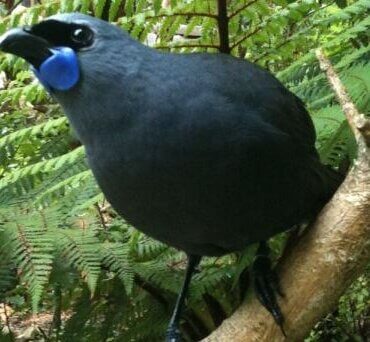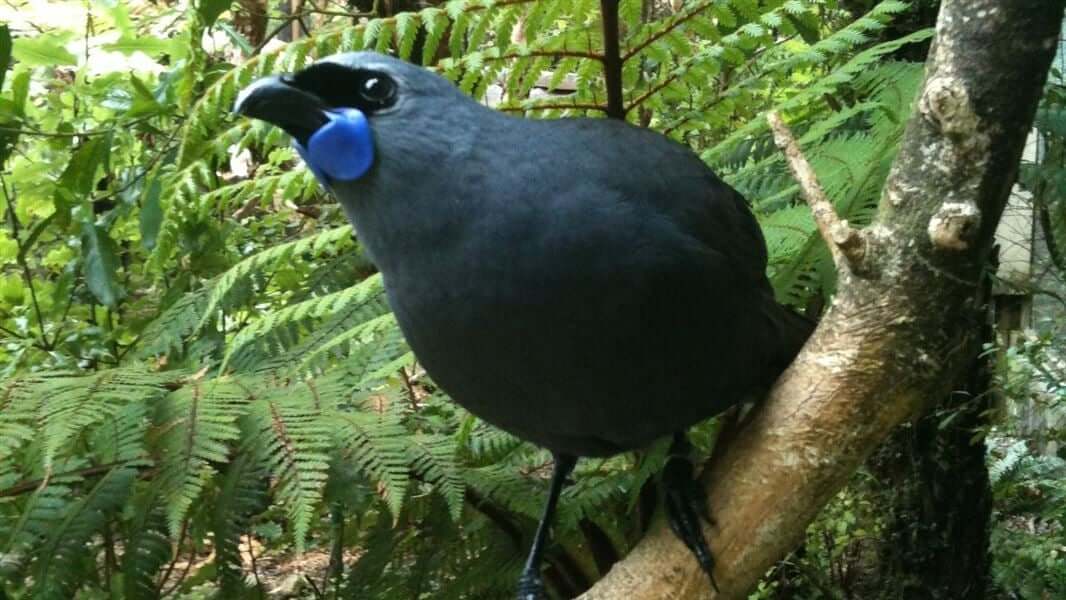

The kōkako has bounced back from near extinction. Photo: Department of Conservation.
Kōkako – and kākāpō – are enjoying life in great numbers in the Waikato.
Doc – the conservation department – has revealed the results of its latest survey in the Waipapa South area of the Pureora forest show there are 124 pairs of kōkako – up from 87 eight years ago.
The total number in Pureora, where pest control has had a significant impact, is now estimated at more than 670 pairs.
And on Sanctuary Mountain Maungatautari, 20 more birds are expected to be introduced – or “translocated” in conservation speak – to the existing population – counted at just over 100 in 2020 – so that in a few “bird generations” kōkako will be moved off the maunga to expand populations elsewhere.
The news comes in the wake of the arrival in July at Maungatautari of four kākāpō from Whenua Hou – Codfish Island – at the foot of the South Island.
And as those four birds – the first kākāpō to live in the North Island for 40 years settle in, another group of the native parrots were being prepared this week to swell their numbers.
It’s planned to have 10 males settled on the maunga before plans are made to introduce females.
Pureora was the scene of prolonged protests in the late 1970s amid fears that logging of native trees there would come at the expense of the remaining kōkako there.
Protesters succeeded in putting a stop temporary stop to the logging and it was abandoned in 1982.
At that time, it was thought the total population was about 700 pairs. The number fell to as low as 300 before the turn of the century but is now closer to 2000 pairs in 26 known populations.
The Waipapa South kōkako survey, carried out in May by five surveyors, covered 1250 hectares across 48 surveyor days. The results suggest an annual growth of four per cent.
Graham Kimber, Doc’s Maniapoto Operations manager, says recovery of the population in Pureora is an important conservation success story.
“Hearing kōkako in the Pureora Forest is a really special experience and long-term recovery work means more people can enjoy the bird’s song.”
The as yet fruitless hunt for some, though, goes on for the South Island kōkako which has orange rather than purple wattles. The bird has not been seen since 1967 – though there have been several reports of their song being heard. It was declared extinct in 1967 – but then reclassified “data deficient”.








